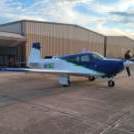Fuel pressure, running hot?
-
Members Online
- Lax291
- Rick Junkin
- bluehighwayflyer
- wood_fly
- kortopates
- Crawfish
- SoccerCA
- mooniac58
- Marc_B
- Ragsf15e
- Scags
- Immelman
- Sabremech
- 201er
- redbaron1982
- Fly Boomer
- Dustoff49
- N201MKTurbo
- Trogdor
- mooney_flyer
- spistora
- ad5ut
- exM20K
- eman1200
- mmcdaniel33
- Thedude
- ProtoFly
- Mooneydreamr
- warren.huisman
- PeteMc
- Hank
- Fix
- nelcardella
- donkaye, MCFI


Recommended Posts